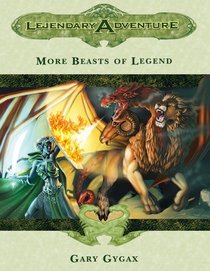Search -
Gary Gygax's More Beasts of Legend
Gary Gygax's More Beasts of Legend
Author:
Troll Lord Games Home | News | Products | The Anvil | TLG Store | Ordering | Retailers | Support | Contact TLG | Blog | Forums LA RPG:More Beasts of Legend Lejendary Adventure Fantasy RPG: More Beasts of Legend Check out the rest of the product line! Lejendary Adventure Resources: Lejendary Adventure Fantasy RPG: More Beasts of Legend ... more »
Author:
Troll Lord Games Home | News | Products | The Anvil | TLG Store | Ordering | Retailers | Support | Contact TLG | Blog | Forums LA RPG:More Beasts of Legend Lejendary Adventure Fantasy RPG: More Beasts of Legend Check out the rest of the product line! Lejendary Adventure Resources: Lejendary Adventure Fantasy RPG: More Beasts of Legend ... more »
ISBN-13: 9781929474714
ISBN-10: 1929474717
Publication Date: 1/28/2008
Pages: 132
Edition: 1st
Rating: ?
ISBN-10: 1929474717
Publication Date: 1/28/2008
Pages: 132
Edition: 1st
Rating: ?
0 stars, based on 0 rating




